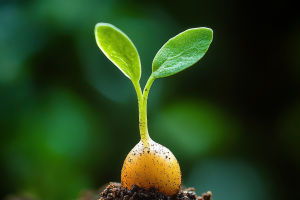Hey Lykkers! You might think plants are quiet, still, and helpless—but don't be fooled. Many have evolved some seriously clever ways to stay safe. From sharp spines to sneaky chemicals, plants are always on guard.
Unlike animals, they can't escape predators or pests, so they rely on built-in defenses that make them less tasty or harder to mess with.
This guide takes you into the wild world of plant protection. You'll explore how thorns keep nibblers away, how toxins silently discourage munching, and how strange chemicals (called secondary metabolites) play both defense and trickery. It's a little leafy, and every leaf, stem, or root has a story to tell.
Part 1: Physical Barriers That Bite Back
Let's start with what you can actually see—those tough structures plants grow to ward off trouble.
Thorns, Spines, and Prickles
You've probably backed away from a cactus or rose bush at some point. Those sharp tips? Not just for show. Thorns (which grow from stems), spines (from leaves), and prickles (from outer layers) are all tools for one mission: keeping herbivores from snacking.
When you run your fingers near a hawthorn branch or a holly leaf, you'll feel the message loud and clear—"Don't eat me." Some plants even cluster these defenses right where animals tend to bite, like near fresh shoots or flowers.
Tough Skins and Hairs
Another line of defense is simply being hard to chew. Some plants develop thick, waxy coatings. Others, like stinging nettles, grow tiny hair-like structures that can irritate or sting if touched. You may not even see them at first—but you'll know they're there.
Next time you take a nature walk, try observing leaves with fuzzy textures or waxy surfaces. Chances are, those features are doing more than just looking pretty—they're keeping the plant alive.
Part 2: Chemical Tricks and Natural Potions
Now let's get into the more invisible side of plant defense—the world of natural chemistry.
Toxins That Warn or Weaken
Some plants create substances that taste awful, disrupt digestion, or even affect the nervous system of insects. These natural toxins aren't just random; they're strategic. When a caterpillar munches a leaf and then feels sick, it learns to stay away.
You've likely heard of plants like foxglove or milkweed. These aren't plants you'd want to snack on. They pack protective compounds that help them survive in environments full of hungry grazers and curious bugs. Even coffee and tea plants use caffeine not just for flavor, but to confuse and repel certain insects.
Secondary Metabolites: The Plant's Secret Agents
Beyond toxins, plants also produce a wide range of chemicals called secondary metabolites. They're not directly involved in growth or reproduction, but they help plants in all sorts of defensive ways.
For example, some release strong smells to attract predators of their predators—like a plant calling for backup. Others change their leaf chemistry after the first bite, becoming tougher or less digestible. And certain flowers even produce scents that keep specific insects away.
You don't need a lab to spot this in action. Ever crushed a leaf and noticed a strong scent? That's a plant defending itself—and giving you a tiny peek into its complex chemical playbook.
So, Lykkers, the next time you're admiring a garden or walking through a forest, take a closer look. Behind every bloom and branch is a system of survival strategies built through time. Plants may not run, but they're always ready—spiked and scented.
These natural defenses remind us that life, even in its quietest forms, is smart and adaptive. Whether it's a thorn on a stem or a bitter taste in a leaf, each is a message: "Handle with care."


